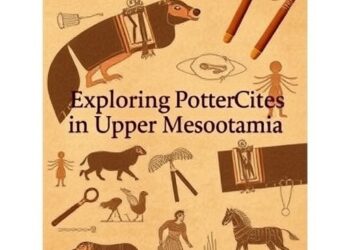Archaeology
Exploring Pottery and Early Cities in Upper Mesopotamia
In the realm of archaeological studies, particular attention is drawn to the fascinating intersection of pottery production, urban development, and...
Secrets of Shang Bronze Artifacts Revealed
In a groundbreaking study, researchers have delved into the intricate world of ancient Chinese bronze artifacts, specifically focusing on the...
Bonecoal Metalworking in Iron Age NW Iberia
In the realm of archaeology and anthropology, a fascinating new study is shedding light on the intricate relationship between metallurgy...
Enduring Needle Case Traditions in Northeast Asia
In a groundbreaking study that bridges the gap between ancient practices and contemporary understanding, a team of researchers has delved...
Needle Cases: Millennia-Long Use in Northeast Asia
In the vast tapestry of human history, few artifacts reveal as much about societies as the needle case. These seemingly...
Reevaluating Gandhāra: Insights into Early Distillation Technology
The exploration of ancient technologies is a fascinating field that not only reveals the resourcefulness of early civilizations but also...
Neanderthal Diet Uncovered: Zooarchaeological Insights from Arrillor
New insights into the subsistence practices of Neanderthals have emerged following an extensive zooarchaeological analysis conducted at the Middle Paleolithic...
Exploring Icedo: Microarchaeology of a Late Iron Age Hillfort
In a transformative step towards understanding the complexities of Late Iron Age societies, a team of researchers led by García...
Remarkable Dog Diversity Existed Thousands of Years Before Modern Breeding Practices
A landmark archaeological investigation has revolutionized our understanding of the origins and evolution of domestic dog morphology, demonstrating that the...
Population Shifts: Muslim to Portuguese Kingdom in Algarve
In a groundbreaking study, researchers have examined the intricate tapestry of population mobility during a crucial transitional period in the...




